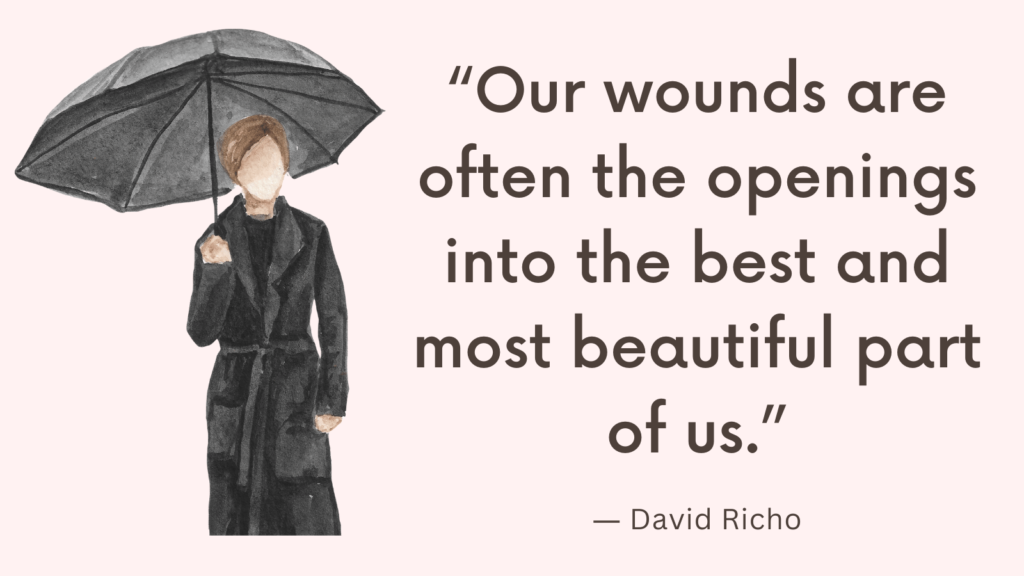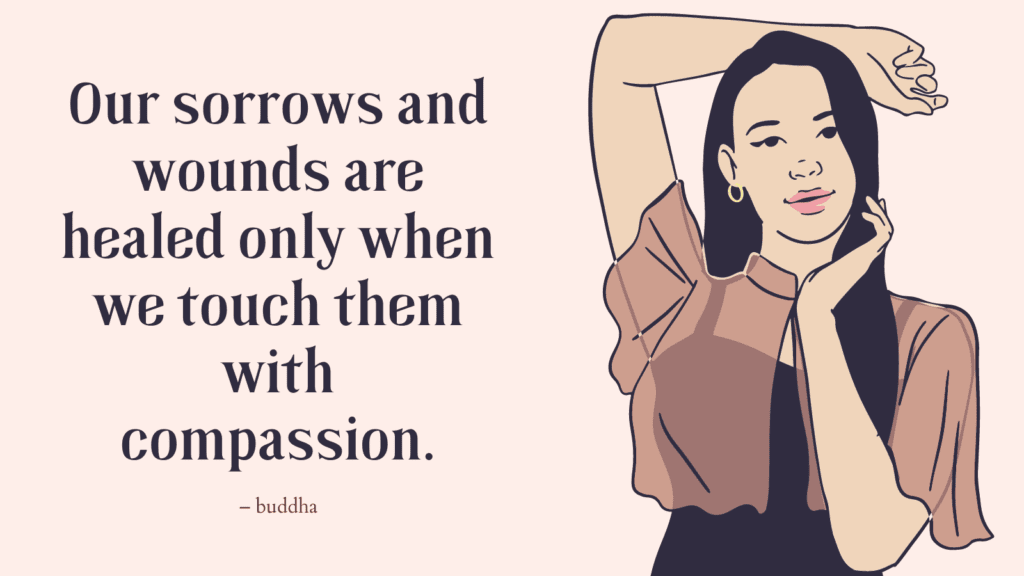This post contains signs stuck in freeze response as well as helpful tips to ‘unfreeze’ yourself.
What Is the Freeze Response?
The freeze response, also known as tonic immobility, is a natural physiological and psychological reaction to perceived threat or trauma.
When faced with danger, our bodies have evolved to respond in various ways, including fight, flight, or freeze.
Unlike the fight or flight response, which involve active responses, the freeze response is characterized by a temporary state of immobility or paralysis.
It is an instinctual survival mechanism that can serve as a protective strategy in situations where fighting or fleeing may not be possible or effective.
During a freeze response, the body undergoes physiological changes.
The sympathetic nervous system, responsible for activating the stress response, initiates the release of stress hormones such as cortisol and adrenaline.
These hormones prepare the body for action by increasing heart rate, blood pressure, and alertness.
However, instead of mobilizing the body to fight or flee, the freeze response activates a state of immobility.
It involves reduced muscle tone, slowed breathing, and decreased heart rate. This immobilization can sometimes be experienced as a feeling of being “frozen” or unable to move.
Psychologically, the freeze response may involve a sense of dissociation or detachment from one’s surroundings, emotions, or thoughts.
It can manifest as a numbing of emotional experiences, difficulty making decisions, memory difficulties, and a tendency to withdraw socially.
It’s important to note that the freeze response is a natural and adaptive reaction to threat or trauma.
It can be observed in various species, including humans, as an evolutionary survival strategy.
However, if the freeze response becomes chronic or interferes with daily functioning, it may be necessary to seek professional help to address any underlying traumatic experiences and develop coping strategies for healing and recovery.
Related: Why Is Trauma Therapy So Hard? (+Best Trauma Healing Exercises To Support Your Recovery)
Top 10 Signs You’re Stuck In Freeze Response
1. Immobility
When faced with stress or danger, you may find yourself feeling stuck, unable to move or take action.
This immobility can manifest physically or mentally as a feeling of being “frozen” or paralyzed.
2. Difficulty making decisions
Freeze responses can lead to indecisiveness and an inability to make choices.
You may find yourself constantly second-guessing your decisions or avoiding making them altogether for fear of making the wrong choice.
3. Feeling detached or disconnected
During a freeze response, it’s not uncommon to experience a sense of disconnection from your own feelings, thoughts, and surroundings.
This feeling of detachment can create a sense of numbness or emotional distance.
4. Hypervigilance
While freeze responses are characterized by immobility, there can also be a heightened state of awareness and vigilance.
You may find yourself constantly scanning your environment for potential threats, even when there is no immediate danger.
Related: 7 Trauma Release Exercises To Support Your Recovery After Trauma
5. Memory difficulties
Freeze responses can impair memory function, making it challenging to recall specific details or events.
This can result in fragmented or incomplete memories of past experiences, making it difficult to process and make sense of them.
6. Avoidance behaviors
Due to the discomfort associated with freeze responses, individuals may engage in avoidance behaviors to escape potential triggers or reminders of past traumas.
These behaviors can include avoiding certain places, activities, or people.
Related: Best 9 Tips On How To Stop Avoidance Cycle (+FREE Worksheets PDF)
7. Physical symptoms
Freeze responses can manifest in various physical symptoms, such as muscle tension, headaches, shallow breathing, increased heart rate, dizziness, or gastrointestinal distress.
These symptoms can occur even in non-threatening situations.
8. Emotional numbing
Freeze responses often involve a suppression or numbing of emotions.
You may find it challenging to connect with and express your emotions, leading to a general sense of emotional flatness or apathy.
9. Social withdrawal
Individuals experiencing freeze responses may withdraw from social interactions and isolate themselves from others.
This withdrawal can stem from a fear of being vulnerable or a lack of energy and motivation to engage with others.
10. Dissociation
Dissociation refers to a disconnection from one’s thoughts, feelings, or identity. During a freeze response, dissociative states may occur as a way to cope with overwhelming emotions or stress.
Individuals may feel detached from reality or have a sense of “spacing out.”
It’s important to remember that these signs are general indicators and may vary from person to person.
Related: Best 11 Grounding Techniques For Dissociation
How to ‘Unfreeze’ Yourself?
Overcoming the freeze response can be a gradual and individualized process, as it often involves addressing underlying traumatic experiences and developing effective coping strategies.
Here are several evidence-based suggestions that may help in overcoming the freeze response:
1. Recognize and validate your experience
Begin by acknowledging and validating the freeze response as a natural reaction to threat or trauma.
Understand that it is not your fault and that many individuals experience similar reactions.
2. Seek support
Consider reaching out to a mental health professional experienced in trauma therapy.
They can provide guidance, support, and specialized interventions designed to address the freeze response and its underlying causes.
3. Understand your triggers
Identify the specific stimuli or situations that tend to trigger your freeze response.
By gaining awareness of these triggers, you can begin to anticipate and prepare yourself for potential reactions.
4. Practice grounding techniques
Grounding exercises can help anchor you to the present moment and counteract dissociation or detachment associated with the freeze response.
Techniques may include deep breathing exercises, focusing on sensory experiences (such as feeling the texture of an object), or using guided imagery.
5. Explore somatic therapy
Somatic therapies, such as Somatic Experiencing or Sensorimotor Psychotherapy, focus on the mind-body connection and aim to release trauma stored in the body.
These approaches help individuals develop a greater sense of safety and regulation by working through bodily sensations and movements.
Related: 7 Trauma Release Exercises To Support Your Recovery After Trauma
6. Gradual exposure to triggers
Under the guidance of a therapist, consider gradually exposing yourself to triggers that typically elicit the freeze response.
This technique, known as exposure therapy, allows you to build tolerance and resilience over time as you confront these situations in a safe and controlled manner.
7. Engage in self-care practices
Prioritize self-care activities that promote relaxation, stress reduction, and emotional well-being.
This may include activities like exercise, meditation, journaling, spending time in nature, or engaging in hobbies that bring you joy and fulfillment.
8. Develop coping skills
Learn and practice effective coping skills to manage stress and anxiety.
These may include mindfulness techniques, cognitive reframing, problem-solving strategies, and relaxation exercises.
With time and practice, these skills can help you regulate your emotions more effectively.
Related: Best 99 Coping Skills (+FREE Coping Worksheets)
9. Consider eye movement desensitization and reprocessing (EMDR)
EMDR is a specialized form of therapy that focuses on processing traumatic memories and experiences.
It incorporates bilateral stimulation techniques, such as eye movements or tapping, to facilitate the healing process, reduce distress, and alleviate freeze responses.

10. Explore self-regulation techniques
Trauma impacts the nervous system, often resulting in dysregulation.
Learning techniques to self-regulate, such as diaphragmatic breathing, progressive muscle relaxation, or body scans, can be helpful in managing the physiological aspects of the freeze response.
11. Foster a sense of safety
Engage in activities that foster a sense of safety and security.
This may involve creating a calm and supportive environment at home, establishing consistent routines, engaging in relaxation exercises, or practicing self-compassion.
12. Educate yourself about trauma
Learning about the science and psychology of trauma can help you better understand your freeze response and its effects.
It can also empower you to make informed decisions about your healing journey and treatment options.
Related: Best 10 Books For Healing Trauma

Conclusion
Remember, everyone’s journey is unique, and progress may occur at different rates.
It’s crucial to work at a pace that feels comfortable for you while seeking professional guidance when needed.
With time, support, and evidence-based strategies, it is possible to overcome the freeze response and move towards healing and recovery.



